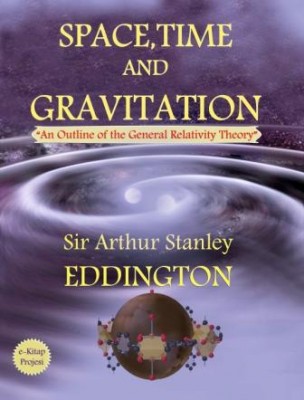More Search Results...
Sir Arthur Stanley Eddington, (1882 – 1944) was a British astronomer, physicist, and mathematician of the early 20th century who did his greatest work in astrophysics. He was also a philosopher of science and a popularizer of science.
The Eddington limit, the natural limit to the luminosity of stars, or the radiation generated by accretion onto a compact object, is named in his honour.
He is famous for his work regarding the theory of relativity. Eddington wrote a number of articles that announced and explained Einstein’s theory of general relativity to the English-speaking world. World War I severed many lines of scientific communication and new developments in German science were not well known in England. He also conducted an expedition to observe the Solar eclipse of 29 May 1919 that provided one of the earliest confirmations of relativity, and he became known for his popular expositions and interpretations of the theory.
He died from cancer in the Evelyn Nursing Home, Cambridge, on 22 November 1944 and was cremated at Cambridge Crematorium (Cambridgeshire) on 27 November 1944 and his cremated remains were buried in the grave of his mother at the Parish of the Ascension Burial Ground in Cambridge.
Eddington was born in Kendal, Westmorland, England, the son of Quaker parents, Arthur Henry Eddington and Sarah Ann Shout. His father taught at a Quaker training college in Lancashire before moving to Kendal to become headmaster of Stramongate School. He died in the typhoid epidemic which swept England in 1884. His mother was left to bring up her two children with relatively little income. The family moved to Weston-super-Mare where at first Stanley (as his mother and sister always called Eddington) was educated at home before spending three years at a preparatory school.
In 1893 Stanley entered Brynmelyn School. He proved to be a most capable scholar, particularly in mathematics and English literature. His performance earned him a scholarship to Owens College, Manchester (what was later to become the University of Manchester) in 1898, which he was able to attend, having turned 16 that year. He spent the first year in a general course, but turned to physics for the next three years. Eddington was greatly influenced by his physics and mathematics teachers, Arthur Schuster and Horace Lamb. At Manchester, Eddington lived at Dalton Hall, where he came under the lasting influence of the Quaker mathematician J. W. Graham.
Space, Time and Gravitation: “An Outline of the General Relativity Theory”
Einstein has succeeded in separating far more completely than hitherto the share of the observer and the share of external nature in the things we see happen. The perception of an object by an observer depends on his own situation and circumstances; for example, distance will make it appear smaller and dimmer. We make allowance for this almost unconsciously in interpreting what we see. But it now appears that the allowance made for the motion of the observer has hitherto been too crude|a fact overlooked because in practice all observers share nearly the same motion, that of the earth. Physical space and time are found to be closely bound up with this motion of the observer; and only an amorphous combination of the two is left inherent in the external world. When space and time are relegated to their proper source|the observer|the world of nature which remains appears strangely unfamiliar; but it is in reality simplified, and the underlying unity of the principal phenomena is now clearly revealed.
More info →




























